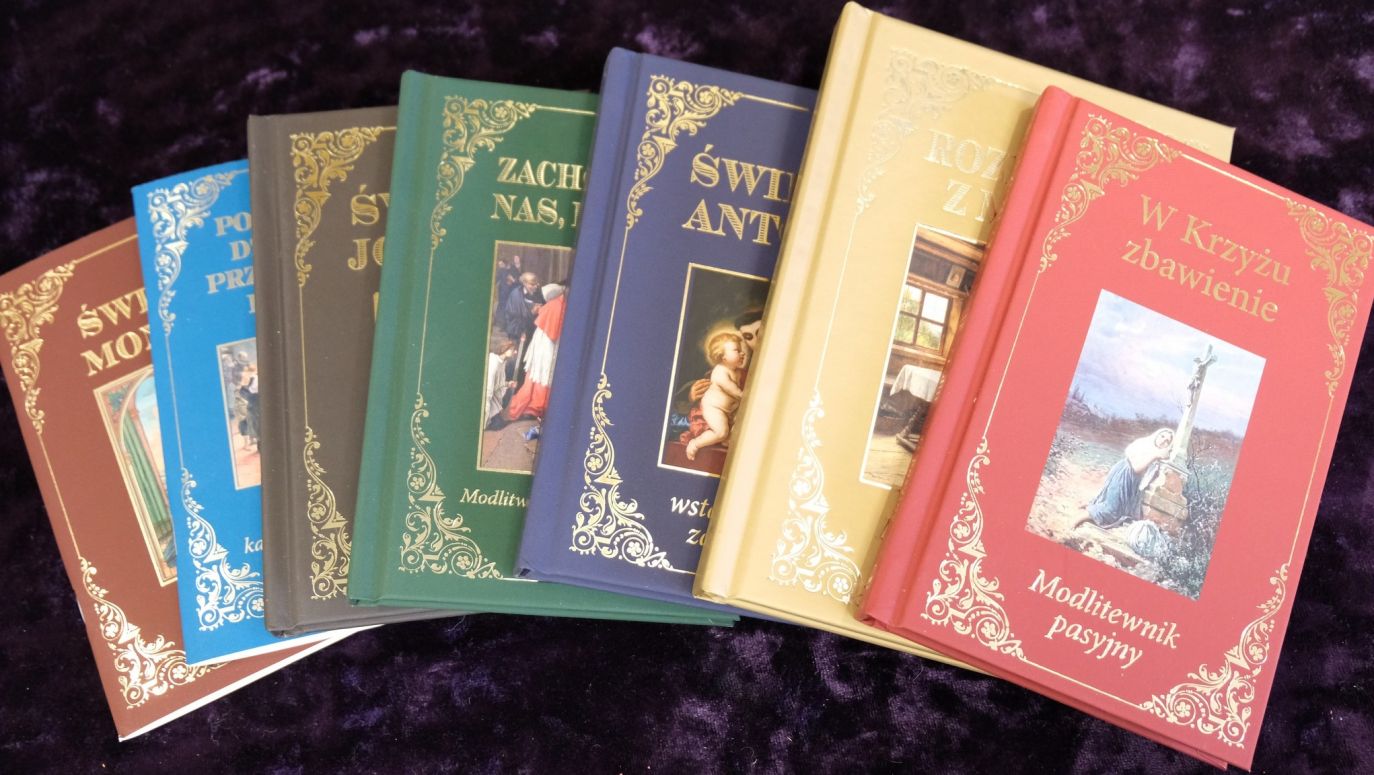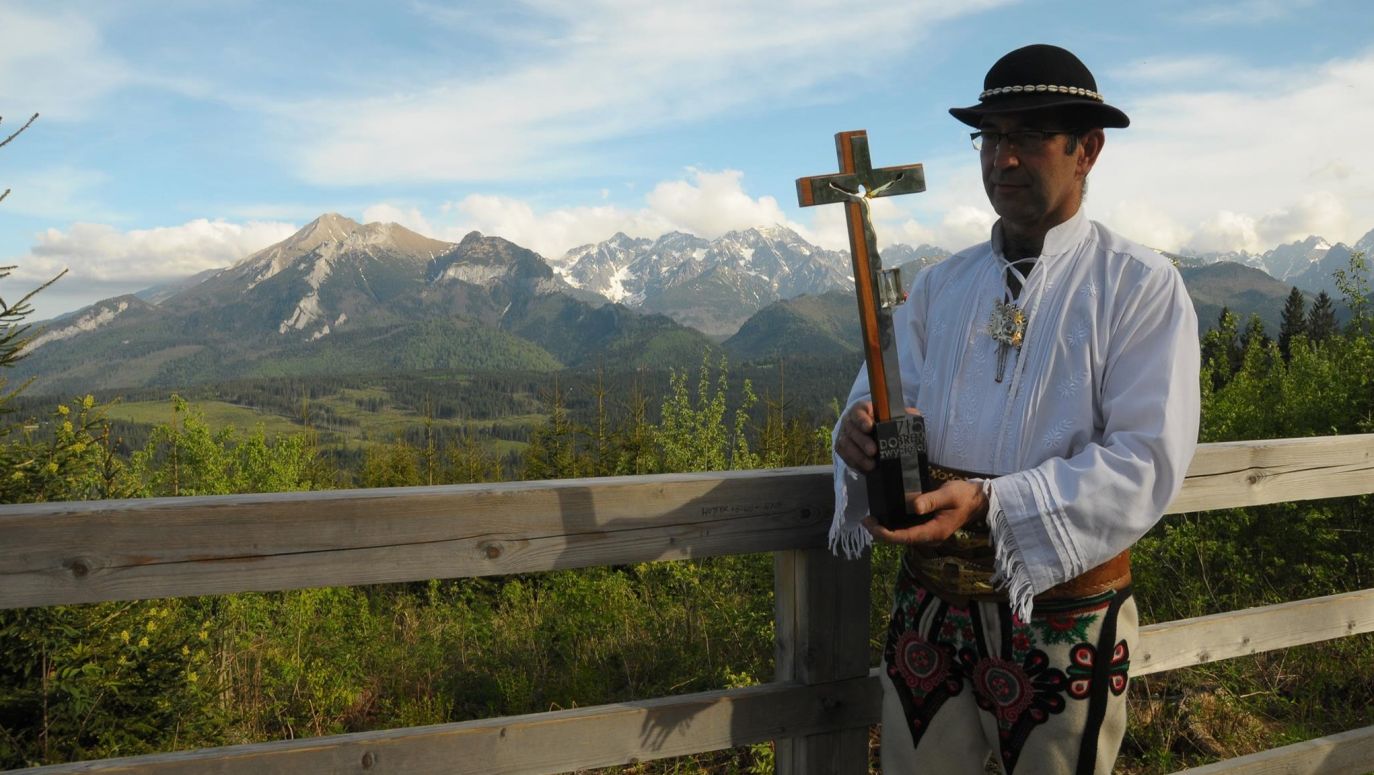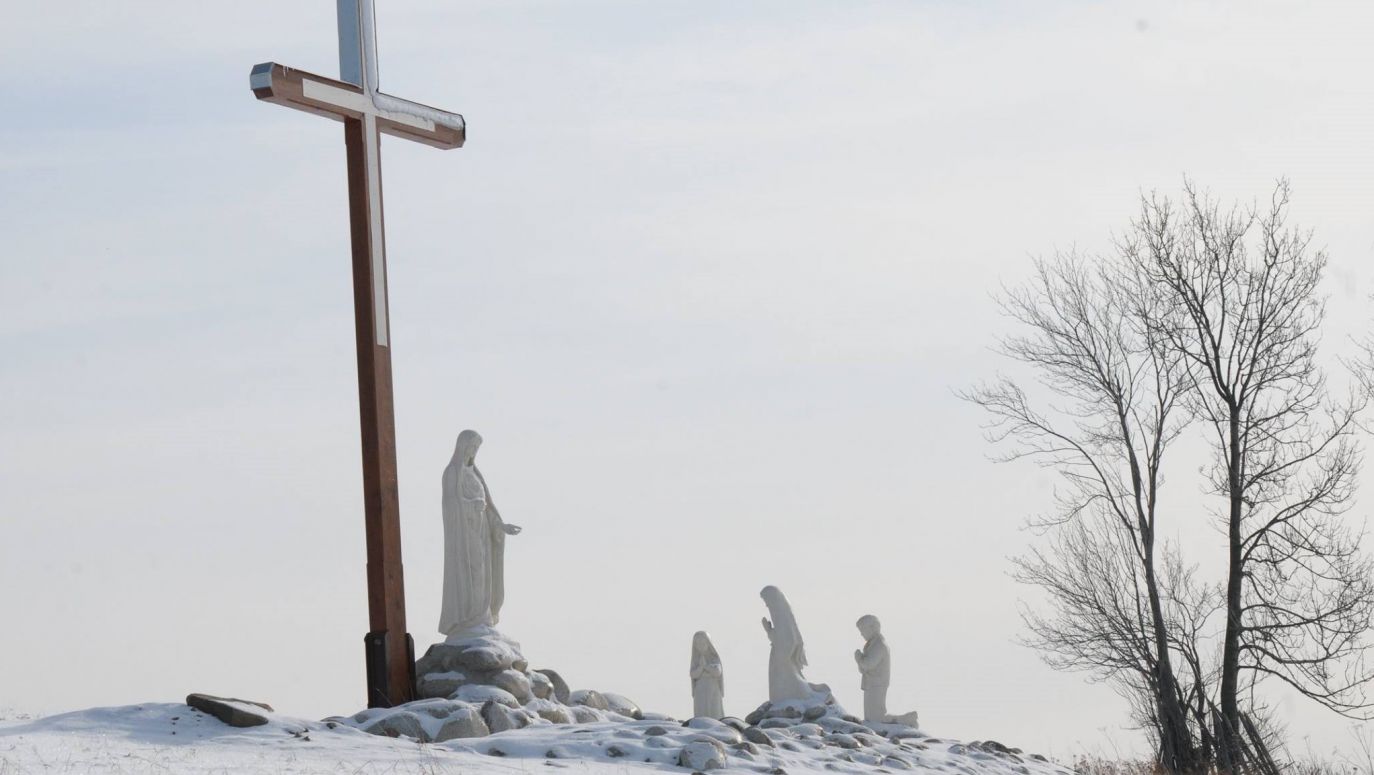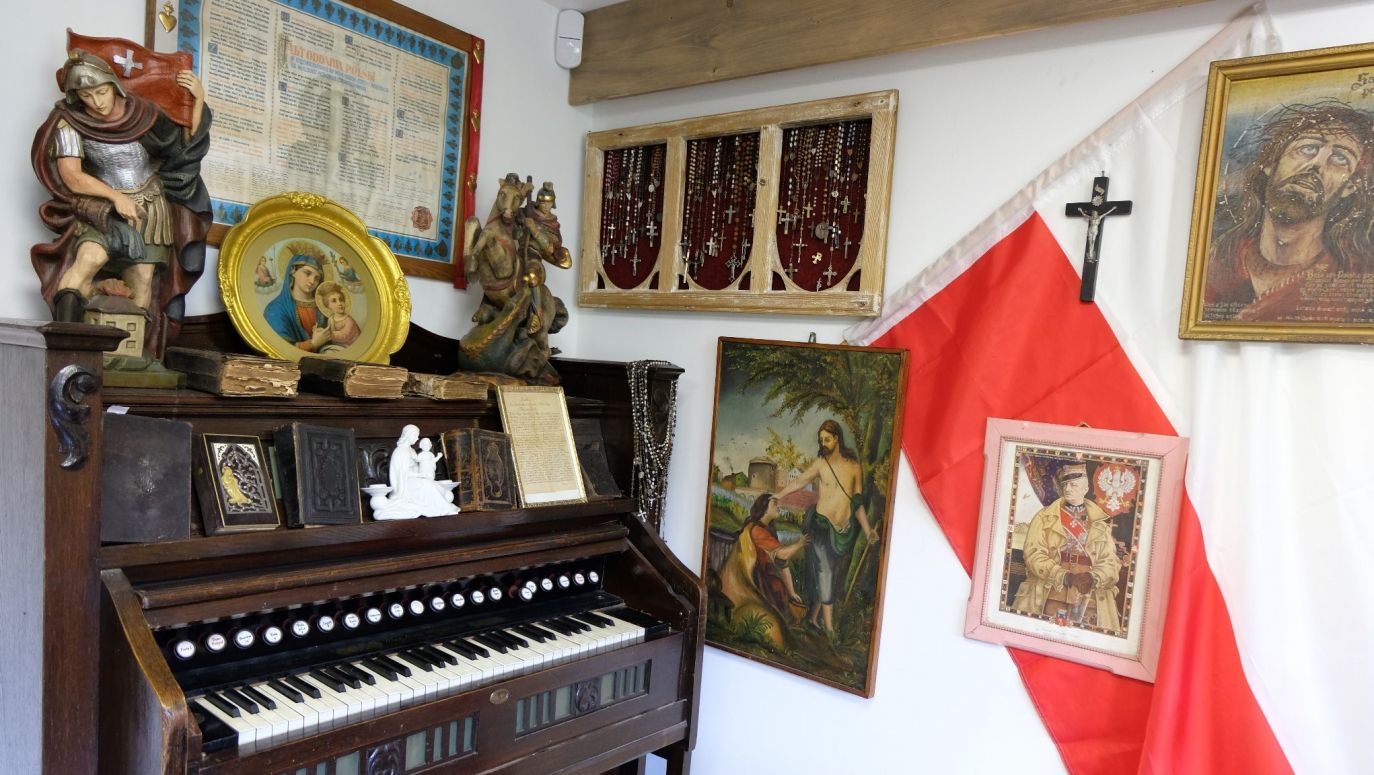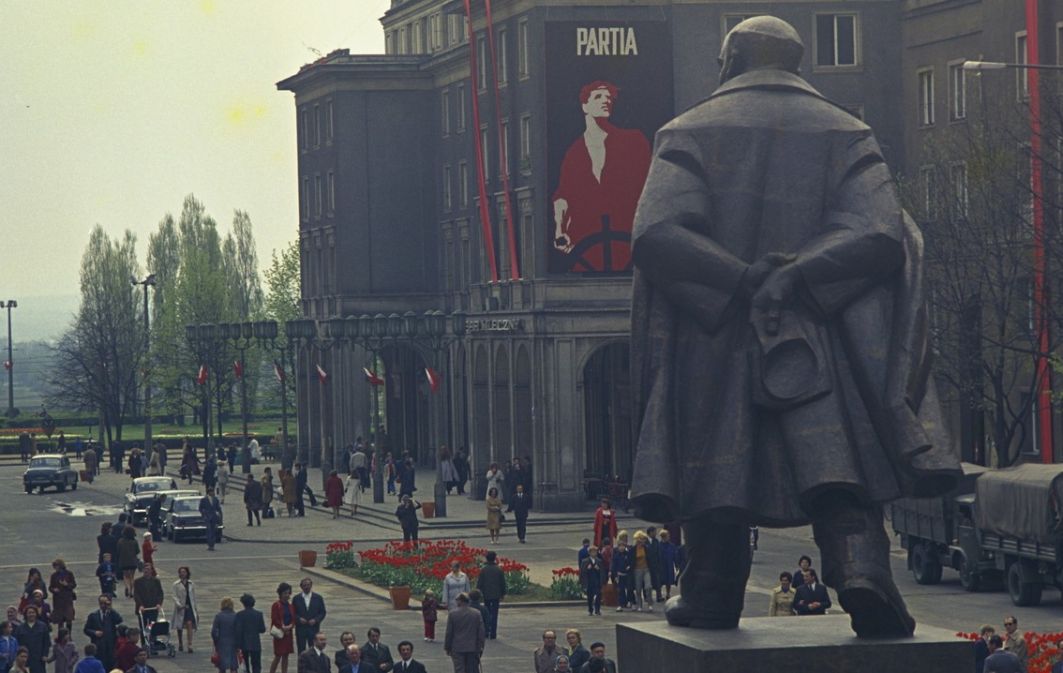There is God, man, concentration, and prayer
27.07.2022
It was this very moment after John Paul II’s death when the evangelion lying on his coffin closed. Until then I had been a mediocre Catholic. But then I thought to myself that Pope was saying to me: “I’m done, now it’s your turn” – tells Jantek Gall who established Saint Joseph’s Oratory in Brzegi. He collects devotional articles and prayer books, mostly from the 19th Century, basing on which he elaborates his own ones – he has published, inter alia, a prayer book for a time of pestilence, another one will be released shortly – for a time of famine.
Prayer books are browsed better in paper version than on a computer screen anyway.
You're right. When opening such a prayer book, we feel the smell of paper, we feel the texture with our eyes, we see the beauty of the art of printing and bookbinding, and at the same time we think with its authors and previous users of these extraordinary books. I believe that prayer books have their greatest power in this form. A person then focuses on what he is reading, he is not distracted by artificial light flowing from the screen, he is not tempted to click somewhere, to watch something else. There is God, man, concentration, prayer, and prayer.
What prayer books would you recommend?
Of course, the most ancient ones, from the time when Poland was partitioned, i.e. from the 19th Century. However, I realize that they are not available to everyone, so in order to take advantage of the beauty of these old prayers at least a little, let me recommend my last two. One is maybe not a prayer book, but rather a family book that should be in every home. It's called “Conversations with Mom. Mother’s Prayers”. A book that cannot be described in a few words, you just have to take it in your hand, get a tissue to wipe off your tears and read, read, read. It consists of four parts: beautiful prayers and patriotic poems, prayers needed by mothers, prayers and texts in the event of the death of a very close one, and a colored insert with a unique text by Rev. Józef Janiszewski “What is the Fatherland?
The second prayer book is entitled “Salvation in the Cross”. An unusual Passion Prayer Book based entirely on the texts of Father Charles Antoniewicz who, during his lifetime, was called a Polish Job or Father Charles of the Cross. After his death, eight books were written about him, in various regions of partitioned Poland, so each of them is deprived of a part of his biography. It is only by reading all of them together that you can understand what kind of person he was. Father Antoniewicz was an 1830/1 insurgent, he saved himself from being deported to Siberia by escaping to Vienna. When the matter was quiet, he returned to his estate, because he was a nobleman of Armenian origin. After his return, he opened a school for peasants in his estate. When an epidemic broke out, he converted it into a hospital. In those days, such action was unthinkable for others. Father Antoniewicz had five daughters. They all died year after year. When he said goodbye to the last one, he and his wife decided to distribute their fortune to the poor and enter the convent themselves. The wife died the day after her perpetual vows.
Father Charles became a Jesuit. And as it happens with the Jesuits, the superiors decided to throw him into deep water right away. If he drowns, nothing will come of him, and if he shows that he can swim on this “deep water of faith”, maybe he will make something of himself. He was sent to silence the Galician slaughter [1846]. He was so successful during parish retreat there that two thousand people would listen to him at a time. Without a microphone, without a sound system, nowadays almost impossible. Wherever the plague broke out, Father Antoniewicz was sent to preach missions, to prepare people for death. One day he came to a woman who was already so sick that she was unable to receive the last anointing. Hosts were falling out of her mouth, one after another. Then he went to other sick people, so he could not put them back in the ciborium. To avoid profanation, he ate it himself, knowing that he would become infected.
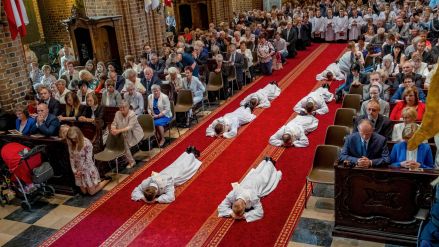
We are a much more Christian society than we think - and it's not about statistics, it's about attitudes.
see more
Each day he prepared 20 sick people for death, and then the sacrament of anointing lasted at least half an hour or more. Hands, legs, ears, eyes, all receptors were anointed to atone for the sins they had committed. Once, after such a busy day, he was asked to administer the sacrament to another family. It was a family that lived in a pigsty. Neither the doctor nor the priest wanted to go to them. Father Charles did go there. He crawled up there, confessed them, lying down on the dung with them, because due to their health they were unable to get up. He anointed them and prepared for death, and when they died, he led their children out of the pigsty. He washed them and told the landlord to look after them until relatives looked after them.
Father Charles died at the age of 45, but during his lifetime he managed to create 70 prayer books. This second collection, which I have compiled, is based precisely on his texts.
How did your adventure with discovering prayers from the old days and collecting prayer books begin?
It may seem funny to someone, but It was this very moment after John Paul II’s death when the evangelion lying on his coffin closed. Until then, I had been an average Catholic. Yes, the Pope was close to me, he reminded me a bit of my uncle. When he came to Poland on pilgrimages, I went to these meetings. I felt safe with him, but only this symbolic moment opened something in me, changed something.
It was then that I thought the Pope was saying to me, “I'm done, now it's your turn”. I walked with this conviction for several months and I wondered what I could do. And because when I do something, it is never half-hearted and I always add a little divine kitchen spice to it, that is impetus, I went to my parish priest and offered to issue a weekly. He agreed and said that if I could do it for three or four weeks, it would be fine. It worked for six years.
I published a free weekly, no ads, 20 pages, colorful, at home. I was the editor, writer, graphic designer, I folded it, printed it and distributed it in the number of 120,000 copies a week. Due to the fact that the weekly began to appear in other parishes, I started looking for texts because I lacked them. After my grandmother, who was a Franciscan tertiary, I got seven prayer books, including The Tertian Breviary, “A Polish woman before God” from 1910. I started going through them and copying prayers. I took a liking to them, and if I like something, I can’t leave it lying fallow. So I started looking for others and I gathered so many that I launched the already mentioned portal laudate.pl.

What did John Paul II do to curb sex crimes in the Church?
see more
You mentioned Andrzej Bobola. Is it not a fashionable saint recently, like the prayer of Father Dolindo Ruotolo “Jesus, you take care of it”?
Bobola is an inconvenient saint for the Church, just like many other saints. Many of them set the bar too high, and those made saints might have hidden. Bobola was forgotten until the Battle of Warsaw. Apart from the act of entrusting to Mary and a few other outbursts of prayer, it was the prayer through Bobola’s intercession that contributed to the victory in the Battle of Warsaw. Most of these prayers, acts of prayer have been gently swept under the rug. After the apparitions in 1928, Bobola’s relics were brought from Rome to Poland. On this occasion, his cult was revived. After the war, the communists tried to sweep him under the rug again.
Communists and the authorities of the Polish People's Republic did not like the Church, we know that, but were the prayer books also subject to censorship, like books?
Yes of course. Most of the devastation in Catholic prayer books, which is attributed to the Vatican Council, was actually for political reasons and was carried out by the Security Apparatus, the evidence of which I have in my collection. Prayer books from the 40s and 50s of the twentieth century, censorship copies, in which everything that the authorities did not like is crossed out and bears an appropriate seal after it was crossed out.
What did you not like? What did the censorship delete?
Everything about old Poland, the reign of Christ the King. Literally whole fragments of prayers were deleted. Censors also crossed out fragments of prayers for Poland and those concerning patrons of Poland, e.g. St. Stanisław Kostka, St. Wojciech. [Adalbert] Nor did they like like what was taught about Hell, Purgatory, damnation, and the devil.
What prayer books dominate your collection?
I try to limit my collections to the nineteenth and early twentieth centuries, with particular emphasis on the nineteenth century, when Poland was partitioned. It was a time “when in distress, go to God”, and thus a wonderful flow of prayers, beautiful, deep, the kind with which you can use up tons of tissues. I also have what was published after the war, but in a small number and rather, when I work on my own, I do not use these prayer books.
What is beautiful and magical about these prayer books that you want to collect them, keep them for next generations?
There is nothing magical. It is a tradition of 2,000 years of Christianity. Everything in these prayer books is refined, made according to specific standards. An example is the “Spiritual Magazine of Prayers and Songs” from 1889. I am talking about it because it was not written by some bishop, priest or saint, but by an ordinary man – chief foreman Matthew, a hard-working man who saw the need for such a prayer book. He arranged it so beautifully that there is nothing but to learn from it, my ones with compared what he created are somewhat chaotic. This one has 500 pages, is long, beautifully published. Just chapeau bas!
How has the language of the prayer books changed over the years?
I myself am subconsciously switching to this 19th-century language. For me, it is more expressive, expanded. It is easier to convey the content you want to convey. There is no beating around the bush, if something is to boom, it will boom. With the passage of time, I observe that the contemporary Church is becoming more and more conciliatory and subject to opinion. In my opinion, the right way is to stick to the truth, revelations in the Scriptures, and tradition.
And the summons in litanies? I get the impression that some, such as “O, Queen of the world” or “O, Queen of Poland”, do not appear in every prayer book?
If you picked up the prayer book of Bar Confederates [1768-1772], these appeals were already included in the litany. Some of them in the following years were neglected by censorship and deleted. The “O, Queen of Poland” had no right to appear during the partitions. This summon was included [in prayer books] at the end of the 18th century. The litany is actually a simple prayer, a mantra derived from the 12th century procession chants, because during the procession it was impossible to hold a prayer book in front of your nose. There are only five officially approved: Loreto, to the Heart of Jesus, to the Name, to Saint Joseph, to All Saints. There are more than a thousand of all that have appeared. Each sanctuary had its own litany, some also had their own hours. Each saint had his own litany, and yet there were and are many of them. Not all of them have been translated into Polish, many of them exist in Latin or their vernacular languages.
Do you have your favourite prayer?
I would start with a simple act of faith that taught me to pray in general. I call it “The Exorcism of Saint Peter” but that's my private name. One short sentence that I say every day in the morning on the kneeler and during the day on every occasion: “O, Lord, you know everything, you know that I love you”. It sets me up for practically the whole day, it protects me.
The second prayer, which I like very much and which my grandmother taught me, and which can be found in this prayer book “Polish woman before God” from 1910, reads as follows: “O, Jesus, lead me through my life, because I can easily go astray or fall. I need your care and help to live a virtuous life and reach heaven. Lead me, Jesus, because the way is long, and I have a lot of responsibilities. I have to love my neighbours in order to serve God and save my soul. In happiness, at work, at play, I will put my mind and heart in front of You. Let everything be in your honour and glory. I give my whole life to you. May silent work help Poland. Lead me, Jesus, eternal God”.
These old prayers are truly original, and besides, they put the man in a proper relationship to God. He is in the first place, the man is in the next. They don't treat God like a hypermarket buying this or that.
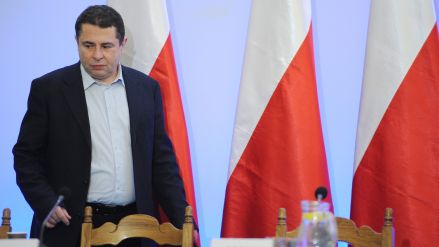
I suspected that my father was Jewish.
see more
Is there a gem in your collection?
There is practically no week without something that surprises me. My collections are quite rich and I really like to rush through them. I will always find something I didn’t know about, whether it’s a litany for sowing time or a not so long ago found prayer when lighting a miner's lamp. Seemingly small, unnecessary things, but posing every problem, every human activity before God. A gem that arouses interest in social media is the “Prayer of the Poor Family”, which will appear in this prayer book for hard times, dedicated to Andrzej Bobola.
What is the oldest prayer book in your collection?
It sickens me when someone asks about the oldest prayer book.
Why?
These oldest books are usually prayer books that contemporaries would not understand at all, written in such a language that you really cannot figure out anything from them. For me, it does not matter if the prayer book is bound in ivory or silver, although these are also in my collections, but the most valuable are those with a torn off cover, the pages of which are separate, because I know that someone used them, found the content he needed. It must be remembered that in the past, before the partitions, prayer books were used by the nobility rather than by ordinary people. Some of the more ornate cost two or three villages.
In your collection, apart from prayer books, there are also devotional articles.
True, and you’d be surprised what kind of devotional articles they are. I am not looking for them, they come to me by themselves, along with prayer books. I really like the ones made by hand, the execution of which took time, dedication and willingness. That is why I like the chapels made before World War II, some from the 19th century. None of them were made with an electric machine, computer, but just by hand. First drawn, then cut with a hair saw, intricately made. If I had to carve in stone or sea foam, because such an altar is also in my collection, with such accuracy, I would not have patience.
What was the strangest place where you found a family altar?
A hen house. Someone had to take it there, because maybe it got in the way in the cottage, maybe it wouldn't look good in the new house? When they dismantle old cottages, I try to be there first, because something would always end up in the trash, and I can see its beauty and value in it. After washing and cleansing, the item finds its place in the oratory. These are not top-shelf devotional items, works by Leonardo da Vinci, because they were often bought during church fairs, at sanctuaries, but they were used for prayer and are beautiful in their imperfect version. If we take into account the fact that the whole family prayed in front of them and stood in a place that used to be a home altar, this value grows even more. Today, this role of the altars has been taken over by TV sets, smartphones and computers. People have moved away from looking for beauty in detail, they take what is ready. In my opinion, this has had a profound effect on our way of thinking and acting.
You also have items with a history in your collection, such as the prayer book of Father Sybirak Wiktor Woydak.
This is a handwritten prayer book, recreated from memory. Rev. Wojciech Woydak, a Sybirak indeed, wrote it, as the nickname suggests, during his exile to Siberia. He came back from there and the original prayer book came back with him. I got it from Father Woydak's family. In addition to prayers, there are also pictures from a German prayer book, stuck between prayer cards. It’s handwritten but looks factory made.
The second such item with a history, although there are of course lots of them, is a ciborium made of a snuffbox. It comes from communist times when the Church was persecuted and liturgical paraments were not easy to obtain. The priest used this silver snuffbox as a ciborium. It was not padded with gold, so the priest, who didn’t have money either, wrapped it with gold paper from a coffee wrapper.
Often people ask me to pray. Once, a guest came to me with such a request for prayer on a matter that I did not really want to take up, but I finally agreed. After some time I forgot about it, but he visited me a few years ago and brought me a cross as a gift. The eight-centimetre brass one. It turned out that after unscrewing it, there were 12 relics of saints inside. It was a sign for me that sometimes it is worth taking up prayers that are not entirely convenient.
You’ve said that prayer books used to be quite expensive and only the nobility could afford them. Does it mean that for years, even centuries, these prayers, songs were passed on to next generations verbally?
Precisely. One such example are pilgrimage songs and grandfatherly songs. The latter term came from the fact that there were passed on by war invalids, knights who earned money in front of churches, sanctuaries and who were telling stories of battles, revelations in the form of songs, so that it would be easier to remember their content. This content taught certain patterns and behaviours. Often these songs consisted of several dozen or even several hundred verses. There were funny inserts there, such as the one in the song about the victory at Khotyn, where the Mother of God threw stones from heaven at Muslims so that they would not gain an advantage.
Pilgrimage songs also had many verses. “Happy people of the French land”, written after the apparitions in Lourdes, is the song “On the mountains, valleys”, which we know in Poland in a truncated version. We also have a lot of chants as messages and prayers. The common people did not understand everything when the mass was in Latin, so they had prayer books for each part of the mass describing what was happening at the altar. Mass songs contained an appropriate number of stanzas to individual parts of the Tridentine Mass. For example, the song-carol “In the silence of the night” begins with an antiphon, and the following stanzas speak of universal confession, reading of the Holy Scriptures, offering and lifting.
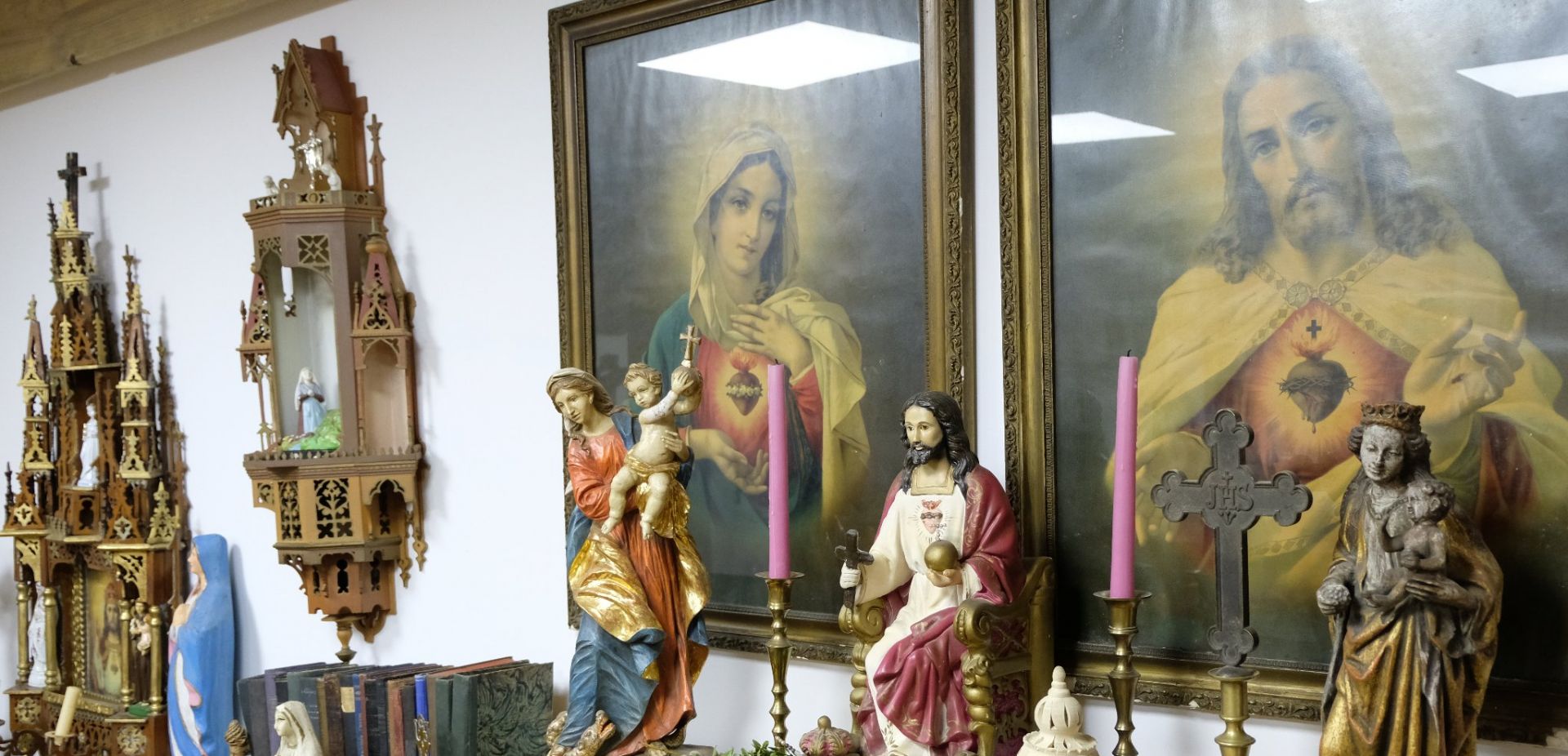
 SIGN UP TO OUR PAGE
SIGN UP TO OUR PAGE
 A couple of years ago computers played a trick on you, thanks to it you’ve realised that digital record, despite its undeniable advantages, has also drawbacks.
A couple of years ago computers played a trick on you, thanks to it you’ve realised that digital record, despite its undeniable advantages, has also drawbacks.